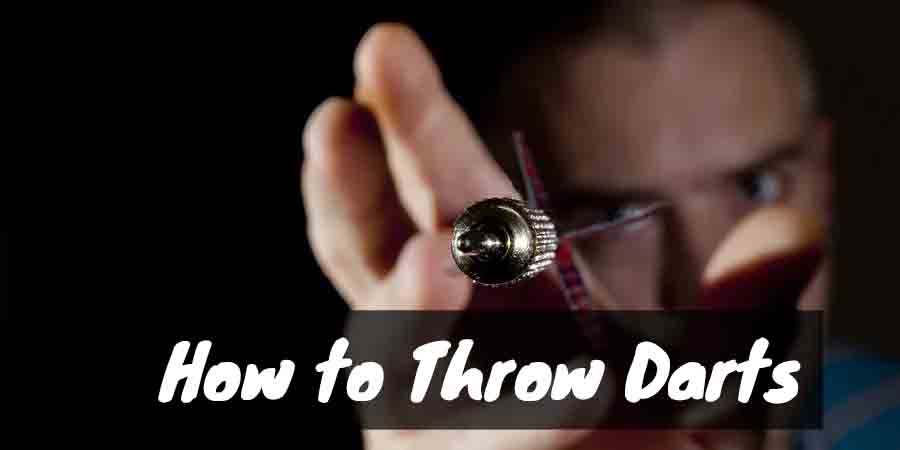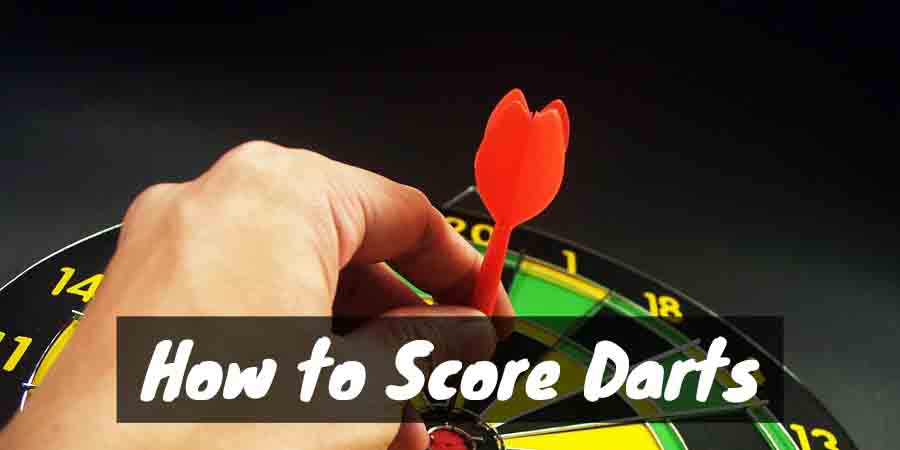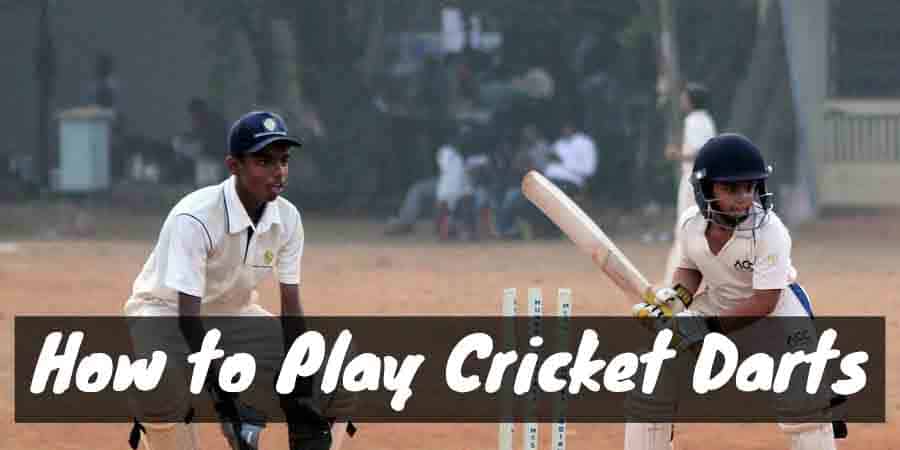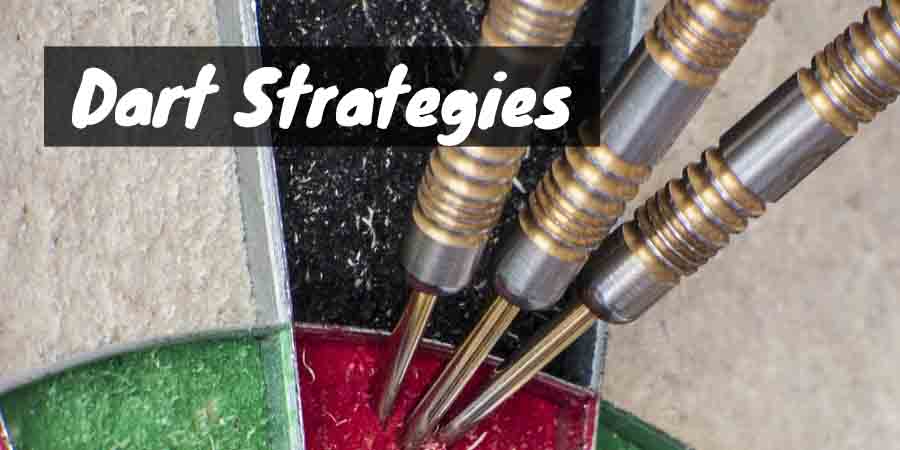If you’re tired of having to buy beer for everyone because you keep losing at darts, then you likely want to improve your game. Making your dart throwing more precise is the fundamental way to win your next dart game. This article will tell you just how to throw your darts with more precision.
1. Improve Your Stance
Making your shots more precise actually begins with your feet. The way that you stand could be affecting both the accuracy and power of your throws. If you stand awkwardly, then it could affect how well you swing your arm.
To improve your stance, you should always ensure that your dominant foot is the one that’s stepping forward. Your feet should be hip-width apart. Whether you move or not is a matter of preference.
Some players dislike moving because they believe that it makes them inaccurate. Others have to move because it improves their swing. Try both to see which suits you better. For those who are moving, just be careful that your foot never crosses the line. Otherwise, you can be disqualified.
It’s good practice to remain a few feet behind the line if you’re moving. This allows you to take a good step forward without crossing the line. Otherwise, for those not moving, just ensure that your dominant foot is the one that you’re leaning into when throwing.
For the rest of your body, ensure that it is perpendicular to the board. That way, when you throw the dart, your aim is naturally directed at the board.
Weight distribution is another key factor in your stance. If you apply too much weight to one foot, it can render you unbalanced. As a result, your throw might be off because you’re leaning too far to one side.
When standing, you want your weight distribution primarily focused on your dominant foot at the front of your body. This helps your body naturally lean forward and adds a bit of extra power to your throw.
- Quality Material : High quality stainless steel dart tips, elegant copper-covered barrel and pvc rods , really…
- Strategically placed copper covered and skid-proof grain provide excellent gripping points, enhancing your…
- For All Skill Levels: Fit for all skill levels darts enthusiast or professional darts player.
- Enjoy The Dart Game-Totally 18 pcs darts, could be divided into 6 teams, enjoy the fun dart games or compete…
- Ideal Gift : Our metal tip darts set can be an ideal birthday gift, Thanksgiving gift, Christmas gift, and…
One last aspect to consider for your stance is whether or not to lean. Some players love to lean because they believe it gives them an advantage. Other players dislike it because it requires you to be focused on your posture more than your aim.
When learning, you have to be consistent each time. Otherwise, your aim will be all over the place. It’s also important that you don’t lean too much because this can wear your body down during a long game of darts.
For those who want to try leaning, ensure that you remain balanced and don’t put too much weight on your front foot. Experiment with the degree of leaning to find the right angle that improves your aim without tiring you out.
2. Holding the Dart
Another way to improve the precision of your dart is by how you hold the dart. There are many different ways to actually hold your darts, but some of them are better than others.
To help ensure that you’re holding the dart the best way possible, you should first find the center of gravity for the dart. You can find it by sliding the dart along the top of your finger and finding the spot where it is perfectly balanced. By gripping at that exact point, you can throw it with more control and accuracy.
How many fingers you use to hold the dart is also important. Naturally, you likely only hold the dart with two fingers. However, this doesn’t help your accuracy in the slightest. It can actually make the dart become unstable.
Instead, you should hold the dart with either three or four fingers. You can achieve this by placing two fingers on one side and having your thumb on the other. With a better grip on the dart, you can control it just that much more.
The pressure is also important. You don’t want your fingers to be so loose that the dart just falls out of your hands. Yet, if you grip too tightly, it can also make you bump your dart before it leaves your hand and messes up your aim.
A good amount of pressure to use is the same kind that you would use to hold a potato chip.
One last tip for holding the dart is to have the rest of the fingers that aren’t holding the dart remain open. If you keep your fingers clenched, then this adds tension to your fingers. As a result, your fingers might twitch or shake when you attempt to throw the dart.
By keeping your fingers open, your hand remains relaxed and controllable.
3. Aiming
Perhaps the most variable tip for improving your dart precision is your aim. There’s no “one rule to follow for all” in this instance. The only way that you can improve your aim is to practice a lot.
Enhancing your focus and improving your line of sight are two key factors that you can work on to help improve your aim. The line of sight that you should be working on is to have the dart and the target all in a single line each time you throw.
If you notice that you keep missing by three inches to the left, then correct your aim. Understand your handicaps and correct them to help your aim become better.
4. Dart Throwing Techniques
There are plenty of dart-throwing techniques that you can study and try for yourself. When you find a technique that feels the most comfortable and improves your game, then you should stick with it and continue to hone it. Here are a few tips on how to improve your dart-throwing technique so that you can improve your precision.
Stability is a key proponent of precision. You’ll need to keep your body stable throughout the movement of throwing the dart. Aside from your arm, everything else should be stationary.
You should think of your arm as a lever. The lower part remains still while your upper arm acts like a whip or a lever. When your lower arm is still, it allows your elbow and upper arm to aim accurately.
When you move forward to throw the dart, try to remain loose. If you’re too tight and stiff, then it can cause your aim to be off.
When throwing the dart, you should also try to throw it in an arc. It’s a mistake to think that the dart will go in a straight line to the target.
How much the dart arcs is dependent on its make and quality. Practice to get a sense of its arcing.
How to Throw Darts Like a Pro (Video)
Related Questions
1. What is the significance of maintaining a good stance in a dart game, and how can you improve it?
In dart games, the stance affects both the power and accuracy of your throws. It begins with ensuring that your dominant foot is stepping forward and your feet are hip-width apart. The rest of your body should be perpendicular to the board to naturally direct your aim at the board. Weight distribution is crucial – you don’t want to lean too much on one foot and make your throw-off. Most of your weight should be on your dominant foot at the front, assisting you in leaning forward to add a bit of extra power to your throw.
2. How should one hold a dart for more accuracy?
To improve your dart’s precision, find the center of gravity for the dart. This balance point allows for more control. Using three or four fingers for grip instead of just two makes the dart more stable. However, the grip should not be too tight or too loose – an ideal pressure would be akin to holding a potato chip. It’s also advised to keep the rest of your fingers open to avoid added tension and ensure better control.
3. How can one improve their aim in darts?
Improving your aim in darts is a matter of practice. Enhancing your focus and improving your line of sight is critical. The goal is to have the dart and the target in a single line each time you throw. If you notice consistent off-target throws, understand your weak points and correct them.
4. What are some effective dart-throwing techniques?
Dart-throwing techniques vary significantly, and finding what works best for you is key. However, some universal tips include maintaining body stability throughout the throw, keeping your lower arm still while your upper arm acts like a lever, and ensuring you stay loose when moving forward to throw the dart. Remember, a dart does not travel in a straight line to the target but in an arc.
5. How does the quality of a dart affect the game?
The quality of a dart can significantly affect its flight path and, ultimately, your game. Different darts will have different arcs, and understanding how your specific dart moves in the air can help improve your throw’s accuracy. Thus, it is essential to practice with the same dart that you would use in the game to get accustomed to its unique characteristics.





